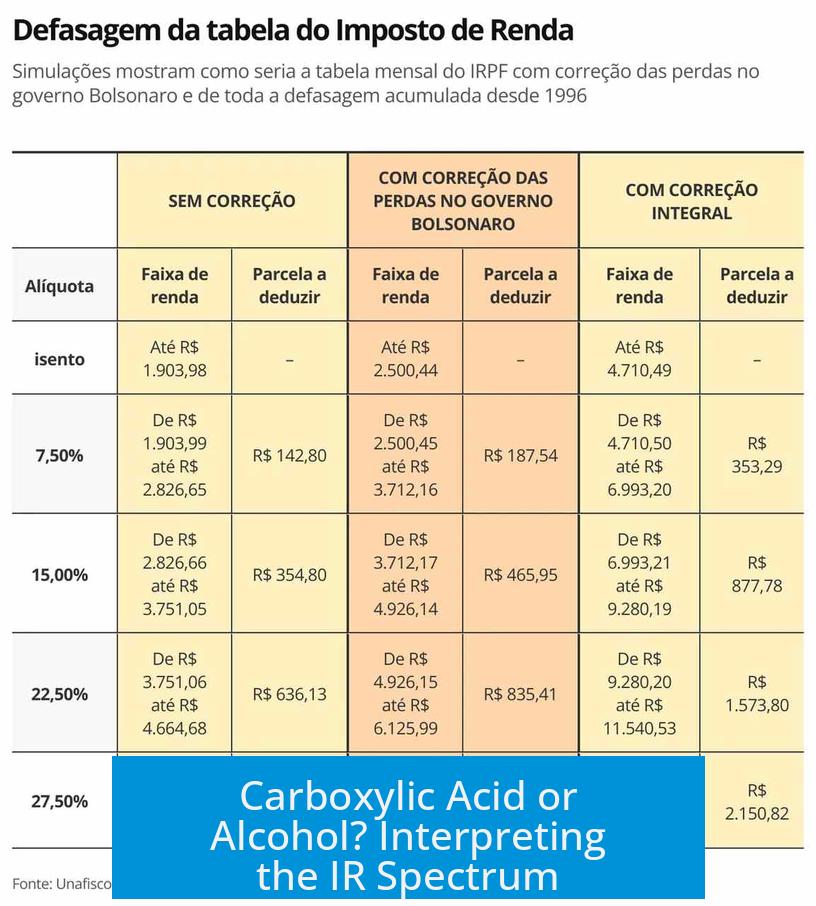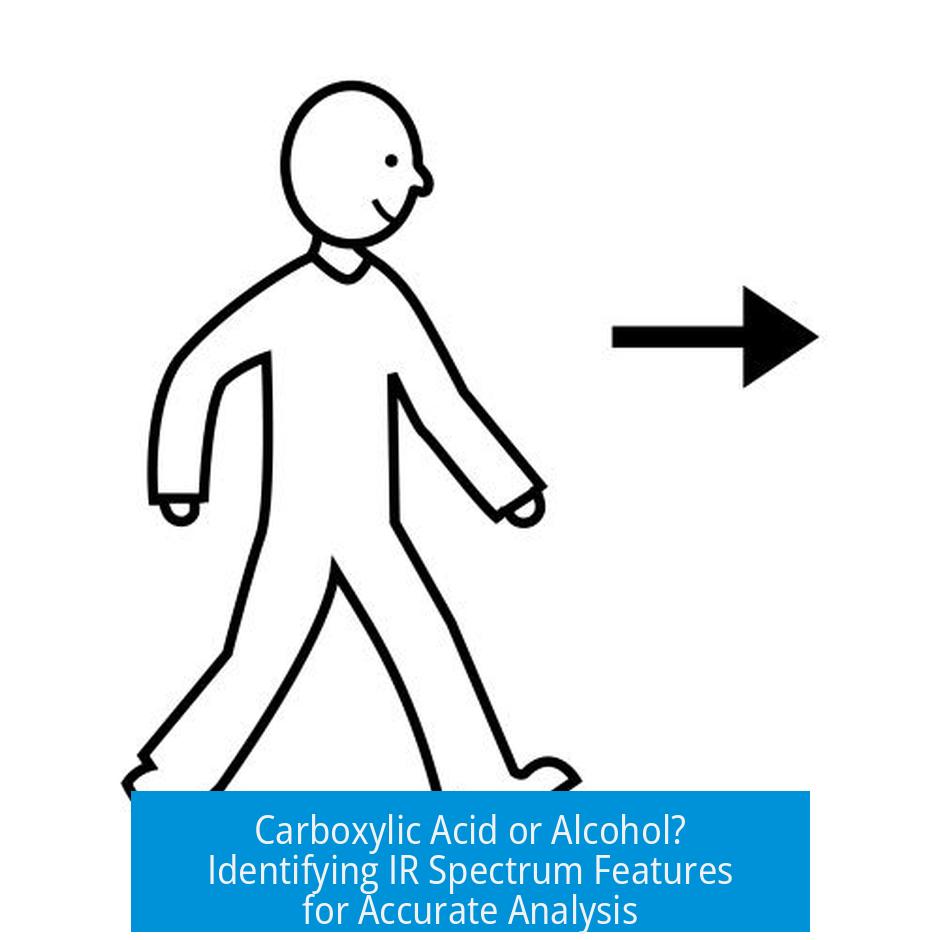Carboxylic Acid or Alcohol? Interpreting the IR Spectrum

The absence of the carbonyl (C=O) stretch around 1700 cm-1 strongly indicates that the compound is not a carboxylic acid; instead, the broad and intense peak observed is more consistent with an alcohol group, though possible water contamination cannot be excluded.
Key IR Spectrum Features for Carboxylic Acids and Alcohols
- Carboxylic acids typically show a sharp, strong C=O stretch near 1700 cm-1. This peak often overlaps with saturated C–H stretches around 2900–3000 cm-1, adding complexity but remaining distinguishable.
- Alcohols produce a broad O–H stretch usually between 3200–3600 cm-1. This peak often appears broad and can have a characteristic shape, sometimes with a narrower signal nearby due to hydrogen bonding variations.
Absence of Carbonyl Peak Confirms Non-Acidic Nature
The IR spectrum under examination lacks any significant absorption near 1700 cm-1. This absence rules out the presence of a carboxylic acid functional group, which reliably presents a strong carbonyl stretch in this region. Therefore, the compound is unlikely to be an acid.
Considering the Broad, Intense O–H Peak
The spectrum shows a broad, deep absorption in the O–H stretch region. While this is consistent with alcohols, the intensity and breadth may be unusually large. Such characteristics could also arise from water contamination or residual solvents. This possibility is common in IR spectra due to sample handling or evaporation of solvents.
Spectrum Quality and Sample Preparation
Evaluating IR spectra requires good signal-to-noise ratio and clarity in the fingerprint region. The examined spectrum appears technically poor, lacking well-defined features. This limitation complicates analysis and may contribute to confusing peaks around 1600 cm-1, sometimes described as “shark tooth”-like, potentially linked to contaminants or overlapping vibrations.
Improving sample drying and re-acquisition of the spectrum can reduce water interference, providing a clearer picture of the functional groups present.
Summary of Evidence
- No carbonyl stretch near 1700 cm-1 excludes carboxylic acid.
- Broad O–H absorption indicates alcohol or water presence.
- Unusually intense O–H peak suggests possible water contamination.
- Poor spectrum quality affects definitive conclusions.
- Drying sample and re-measuring IR recommended for clarity.
Q1: Why does the absence of a c=o peak suggest it is not a carboxylic acid?
Carboxylic acids show a strong carbonyl stretch near 1700 cm⁻¹. If this peak is missing, the compound likely lacks a carboxyl group.
Q2: What does a broad, deep peak in the 3200–3600 cm⁻¹ region indicate?
This region signals O-H stretching. A broad, intense peak can mean alcohol presence or water contamination, as water and solvents often cause similar broad peaks.
Q3: Why might an alcohol show a narrow peak next to the broad O-H stretch?
Alcohols sometimes display a narrow C-H stretching peak near the broad O-H signal. This contrasts with carboxylic acids, which have overlapping peaks in different regions.
Q4: How can water contamination affect the IR spectrum?
Water causes a broad, intense O-H peak, which can mask or mimic an alcohol’s signal. Drying the sample reduces this interference for clearer results.
Q5: What impact does spectrum quality have on functional group identification?
Poor signal-to-noise ratio or lack of a clear fingerprint region makes it hard to distinguish functional groups. A clean, well-prepared sample improves accuracy in interpreting IR peaks.





Leave a Comment